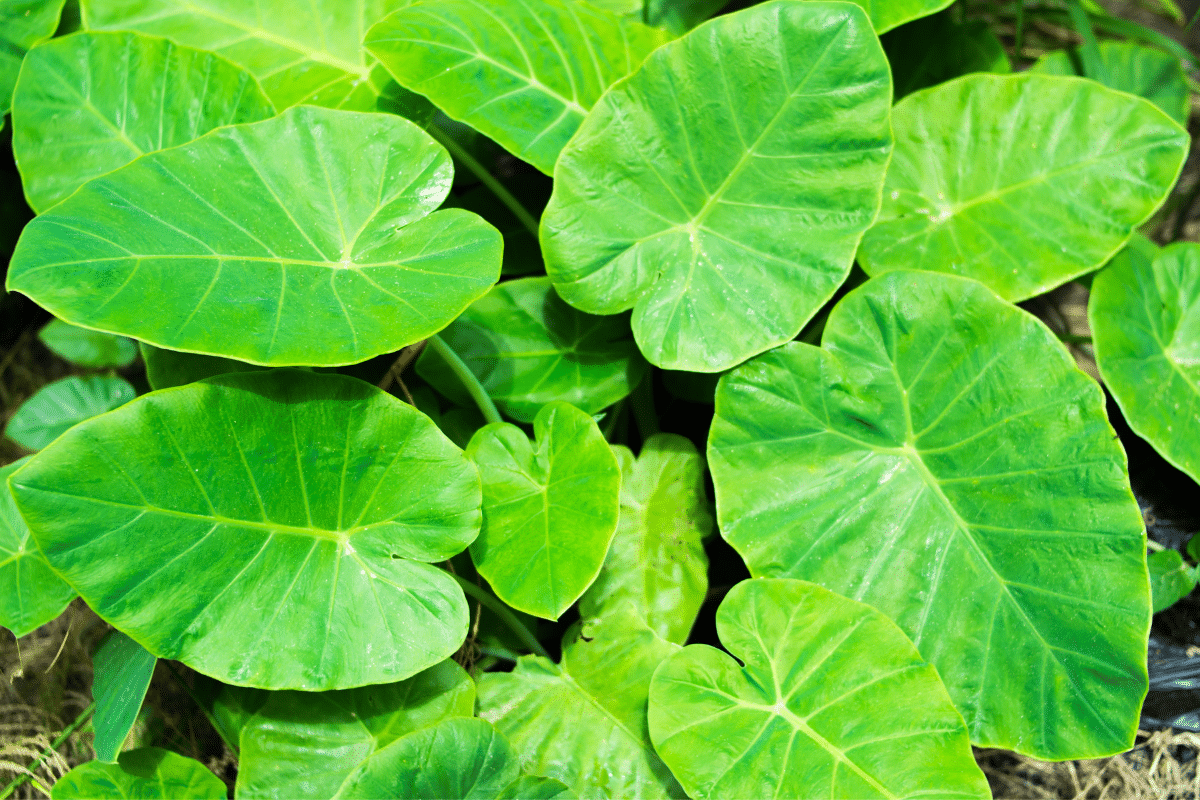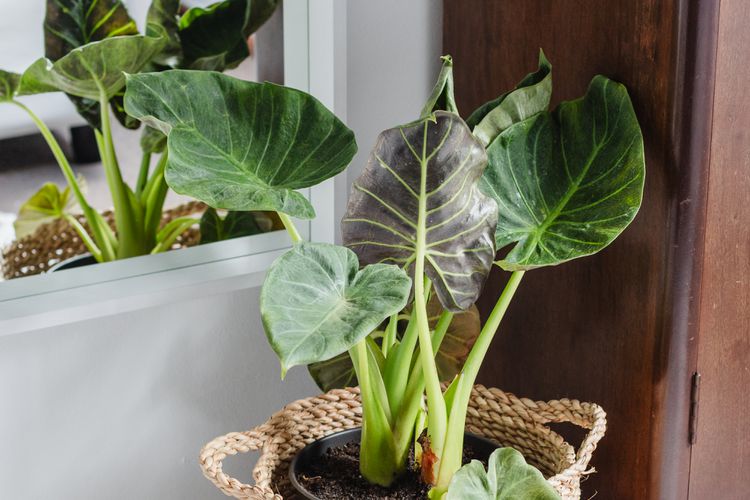The alocasia odora, also known as the giant elephant ear plant, night-scented lily or Asian taro is a tropical plant native to East and Southeast Asia. This striking plant is loved for its extraordinarily large leaves that can grow up to 2 feet long! Caring for an alocasia odora may seem intimidating, but it just takes learning about its preferred growing conditions and implementing a few best practices.
Overview of Caring for Alocasia Odora
Here is a quick summary of the key things to know about caring for alocasia odora:
- Provide bright, indirect light (no direct sun).
- Use a rich, well-draining potting mix.
- Keep soil evenly moist, watering when top 2 inches are dry.
- Maintain warm temps of 60-80°F and high humidity.
- Fertilize monthly in spring and summer.
- Repot when rootbound into a slightly larger container.
- Prune off dead leaves and stems as needed.
- Protect from frost and cold; suitable for zones 9-11.
By understanding the light, water, soil, humidity, and temperature preferences of alocasia odora, you can help it thrive indoors or outdoors.
Light Requirements for Alocasia Odora
Alocasia odora thrives in bright, indirect light. When grown outdoors, it prefers partial to full shade. Indoors, place it near an east or west facing window where it will get plenty of gentle light. Direct hot sun will scorch the leaves, so filter sunlight with a sheer curtain. If light levels are too low indoors, supplement with a grow light. Rotating the plant prevents one-sided growth towards the light source.
Proper Watering Techniques
Alocasia odora requires consistently moist soil. Allow the top few inches of soil to dry out between thorough waterings. The frequency depends on factors like light, temperature, humidity, and soil composition. Indoors, you may need to water as often as every 7-10 days. Outdoor plants in warmer climates may need watering 2-3 times per week. Always water until it drains from the bottom of the pot to prevent salt buildup. Drooping leaves indicate under watering.
Ideal Potting Mix for Alocasia Odora
Use a rich, well-draining potting mix for alocasia odora. A quality potting soil amended with compost or orchid bark keeps soil moist while allowing excess water to drain. Adding perlite improves aeration. For outdoor plants avoid heavy clay soils. Amend garden beds with compost and sand to improve drainage before planting.
Humidity and Temperature Needs
Alocasia odora thrives in warm, humid conditions. Ideal temperatures are 60-80°F. High humidity of 60-70% is preferred. Increase indoor humidity by misting the plant daily or using a humidifier. Outdoor plants enjoy locations like patios and under the canopy of larger plants. Bring outdoor plants indoors if temps dip below 50°F.
Fertilizer for Alocasia Odora
Fertilize alocasia odora monthly in spring and summer with a balanced liquid fertilizer diluted by half. This provides nutrients for growth during the active growing season. Discontinue fertilizing in fall and winter when it enters dormancy.
Repotting Alocasia Odora
Repot when the roots fill the container or the plant becomes top heavy and tipsy. Use a pot only 2-4 inches larger and replenish the potting mix. Repot in early spring before active growth resumes. Remove any dead roots and loosen congested roots before repotting to encourage new growth.
Pruning Alocasia Odora
Remove any dead, damaged, or unsightly leaves by cutting them off at the base of the stem. Pruning promotes new growth and improves the plant’s appearance. Wipe leaves with a damp cloth periodically to remove dust buildup. Cut off spent flowers as they fade.
Alocasia Odora Pests and Diseases
Check frequently for common houseplant pests like spider mites, mealybugs, and scale. Isolate any infested plants and use organic insecticidal soap to treat. Alocasia is prone to fungal issues in wet conditions, so allow soil to dry adequately between waterings and increase air circulation.
Displaying Alocasia Odora
The spectacular foliage of alocasia odora makes it a stunning accent plant indoors or out. Place it in an uncluttered spot where the leaves take center stage. Complement it with other tropicals like ferns, calathea, and begonias. Avoid drafty areas and position it away from heat sources.
Key Takeaways for Caring for Alocasia Odora:
- Provide bright, indirect light indoors near an east or west window.
- Use a well-draining potting mix and pot with drainage holes.
- Allow the top few inches of soil to dry before watering thoroughly.
- Maintain warm temperatures and high humidity.
- Fertilize monthly during active growth periods.
- Repot when rootbound into a slightly larger container.
- Wipe dust off leaves and remove dead foliage.
- Watch for pests and treat any issues promptly.
By understanding and catering to the preferences of alocasia odora, you can help it grow successfully indoors or outdoors. With the proper care, it will produce its signature huge, showstopping leaves!
Soil and Fertilizer Needs
The Elephant Ear plant will grow best in well-draining soil that’s also good at retaining moisture. Go for loose soil rather than a heavier type, so there’s less chance of it being flooded. A potting mix with organic matter like compost, peat moss, and perlite can retain enough moisture without holding too much water.
You may want to monitor the soil’s pH level, which should be kept between 5.5 and 6.5. This will help the plant get as many nutrients as possible.
Since it’s a big plant that grows fast, it will benefit from regular feeding. You’ll only need to feed it every two weeks during active growing seasons in the spring and summer. Then you can cut it back to once a month in late fall and winter, when it’s not moving around as much.
A liquid fertilizer in 50% dilution is one of the most suitable choices for this plant. To avoid burns from too much salt deposit as a result of excessive application of fertilizer, don’t go over the biweekly feeding.
The Exquisite Giant Upright Elephant Ear Plant
So let’s start with a quick background of the Alocasia Odora. These plants have many names, but Giant Upright Elephant Ear seems to be the best one to describe it. When plant shopping, you might also see it labeled as Night-scented Lily or Asian taro.
This type of Alocasia comes from different parts of East, South, and Southeast Asia. It is a species of Alocasia in the family Araceae, which is known for its beautiful broad, blade-shaped leaves.
There are also reports of its rhizomes being used for medicinal purposes, although its raw leaves are inedible.
It’s often used as a houseplant for decoration, and its beauty can give you and your guests something to admire.

Like other Alocasia species, the plant grows out of a rhizome where several stems can grow. It’s safe to say that this perennial herb’s shiny leaves are its main draw. Each leaf can be up to 4 feet (130 cm) long and 3 feet (100 cm) wide, with 9 to 12 lateral veins.
The leaves are interesting because they can’t be put into a single category. At the base, they’re ovate, but at the tip, they’re slightly cordate. The lovely green color makes it easy to match any home decor motif and wall color.
This evergreen can grow up to 2. 5 meters, or around 8 feet tall, with petioles stretching up to 1. 5 meters, or almost 4 feet at maturity. Depending on where you place it, a plant of this size can also be an eye-catching home centerpiece. Mine hasn’t reached this tall yet, but from everything I’ve read, it grows fast. For more tall plants, check out these indoor trees for low light.
People often mix it up with the Alocasia Macrorrhiza, which is easy to do since they look exactly the same. But they have unique characteristics. For example, the leaves of the Odora have rounder sinuses. The Macrorrhiza plant is bigger and can get as tall as 15 feet. Its leaves can get as wide as 8 feet.
Alocasia Care Guide | Secrets to Thriving Elephant Ears
FAQ
How often should I water alocasia odora?
Why are the leaves on my alocasia Odora turning yellow?
How do I keep my Alocasia happy?
Where should Alocasia be placed in a house?
How do you care for Alocasia odora?
Then plant them in a shady or partially shady location with well-draining soil, and water well. Watch out for common pests like spider mites, aphids, and mealybugs on your alocasia odora. It’s also susceptible to a few common diseases including root rot and leaf blight.
What are the ways to stop alopecia areata?
The causes of hair loss or alopecia areata are lack of intake of necessary nutrients. Other causes are genetic, hair shaft defects, fungal scalp infections, and injury to the hair follicles. The necessary vitamin supplements to be used to stop alopecia areata are Biotin, Zinc, Vitamin E, Iron, Vitamin C, and D. Topical applicants containing Minoxidil 5% and Finasteride and topical protein treatment to the hair also help to stop alopecia. Hair oils containing lavender, and garlic extract have also been seen to be beneficial for quick and strong hair growth.
How do you feed Alocasia odora?
Only feed Alocasia Odora during the plant’s growing season. Although the Asian taro is a heavy feeder, fertilizing it during the cold season can do more hard than good. Choose a well-balanced, organic liquid plant feed and ensure you dilute it to about half of its initial strength before using it.
How do you repot Alocasia odora?
When potting your Alocasia odora, remember to place it at the same depth as it was in the previous pot. Gently firm the soil around the plant to provide stability. As your Alocasia odora matures, it may outgrow its current pot. Repotting is essential to accommodate its growing root system.
- A Complete Guide to Caring for Yuki Cherry Blossom Shrub - January 23, 2025
- Identifying Red Hot Poker Seeds: What to Look For When Harvesting Torch Lily Pods - January 23, 2025
- A Complete Guide to Harvesting Evening Primrose Seeds - January 23, 2025

